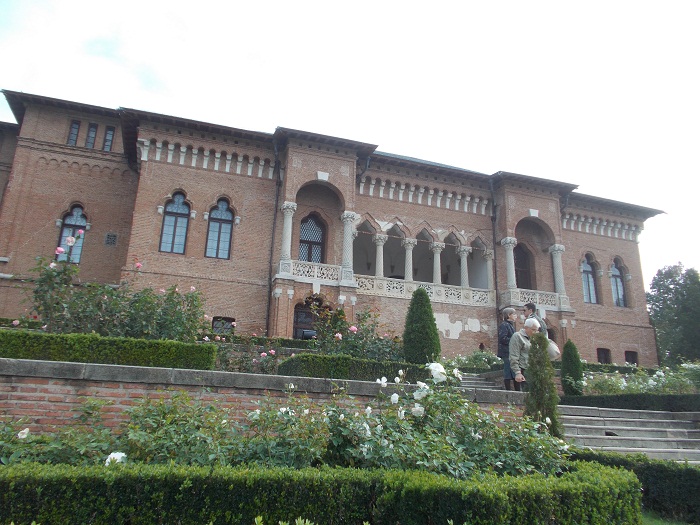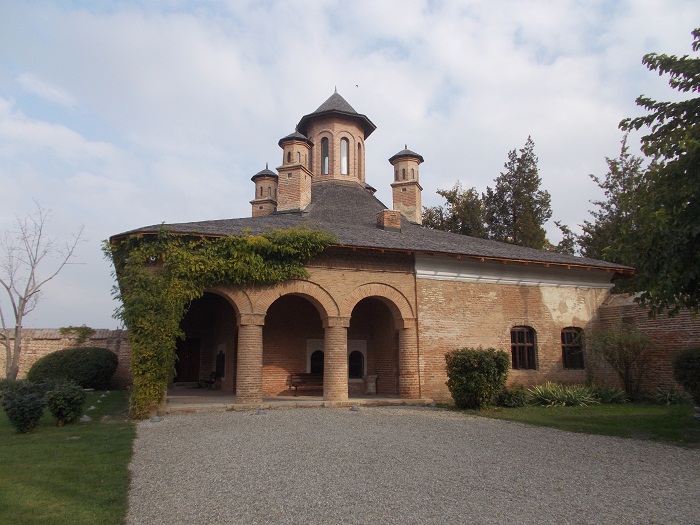Travel planner: An autumn walk through history and art in Mogosoaia

 Guest writer Mariana Ganea goes to Mogosoaia palace to meet with history and art.
Guest writer Mariana Ganea goes to Mogosoaia palace to meet with history and art.
I took advantage of the beautiful autumn days last weekend, waking up early and spending the day very close to Bucharest, in a wonderful place. It's called Mogosoaia. As I had expected, there I found the mix of autumn colors on the background of the Palace that stands there by the lake. After half an hour of driving from Bucharest, or some 10 kilometers away, on the road between Bucharest and the ancient capital of Wallachia, Targoviste, I arrived at the museum complex. My plan was to spend the entire Sunday there, inhaling fresh air, listening to the birds singing and walking on the park alleys, but my expectations were exceeded. Mogosoaia can offer so much more.
Walking on the alleys of the Mogosoaia park, I could swear I felt the presence of its builder, the prince Constantin Brancoveanu. Under his rule, the palace was built between 1698 and 1702. The name of the place came from the widow of the Boyar Mogos, who owned the land which now hosts the palace.
I could imagine his children playing in the large garden, which today is more of a picnic area for city dwellers. I could see them eating traditional dishes cooked in the place called Cuhnia, then I could imagine the prince sitting on his Brancovenesc style throne and thinking of the difficult and complex foreign affairs between his little but rich kingdom and the nearby Goliath empires - the Austro Hungarian, the Ottoman, and Russian. All these kingdoms were equally interested by this country so blessed by nature, and which, above all, had such as good location. In spite of his worries, I imagine the prince calm and peaceful because every morning, together with his family, he listened to the service in the St. George church, which he ordered to be built from his personal funds.

Brancoveanu wasn’t only a highly educated prince, a personality of the Romanian Renaissance, a prince who supported the creation of a Romanian architectural style – which later on was named after him, but he was an open minded diplomat, a visionary, a true Orthodox believer and a very rich man. I remember I learned in school that events in Constantin Brancoveanu and his family's tragic story were triggered by his beliefs and his money. Brancoveanu was the Prince of Wallachia between 1688 – 1714. He negotiated an anti Ottoman alliance with the Habsburg Monarchy and with Russia's tzar Peter the Great. His schemes were betrayed to the Ottomans and in 1714 he was deposed from his throne by the Turks arrested and imprisoned in the fortress of the Seven Towers in Istanbul. He, his four sons and his grand treasurer Enachita Vacarescu were beheaded in the Ottoman capital in 1714.
I’m not a historian, but as a history lover and reader, I think that the reasons for which he and his four sons were killed were deeper than imagined. His foreign policy which tried to conciliate, more or less in the same period of time, with his very powerful neighbors, the Austrians and the Russians against the 'traditional friend' the Ottoman Empire, was very dangerous and led him and his family to death, starting a new era in the history of Wallachia. The Mogosoaia residence, with its palace, its church, its cuhnia, its park and its lake is a place where Brancoveanu’s spirit can still be felt.
Under the dimmer sun light in the afternoon, when walking under the old trees in the park, I saw the Bibescu family vault. Here, in front of the monument I remembered of one of the richer and more ancient Romanian aristocratic families, and, above all, of Princess Martha Bibescu and Prince George Valentin Bibescu. From my childhood, I was fascinated by the beautiful, the well educated, the delicate and the intelligent Princess Martha Bibescu, the French poetess, who was called “the eternal lover”. She rebuilt and extended the Palace in the 1920s, when Romania had tried to be reborn from its own ashes, after a tough war.
Martha Bibescu (1886 – 1973), was a Romanian French writer of the Belle Epoque and a recognized diplomat. In spite of her sentimental disappointments she was married to Prince George Bibescu, who died in 1941. The prince was a Romanian pilot, founder of the Romanian Automobile Club, of the Baneasa airport and president of the Romanian Olympic Committee.
The inter-war period was a good one for Romania and personalities such as Martha Bibescu, who was also a very smart diplomat, had a huge impact on the development of the country. I could imagine the rich, educated, beautiful couple Martha and George Bibescu walking on the large park alleys in the sunset, sitting by lake until the moon showed behind the trees and smelling the perfume of the garden roses.
If you want to feel history and poetry, even if it's of a new country to you, go to Mogosoaia. You will not regret the choice.
By Mariana Ganea, Guest Writer
Mariana holds a PhD in Economics and she has been working in banking since 1991. Now, she is senior training consultant in banking and she is also freelance authorized trainer in soft skills and financial banking techniques. She studied banking techniques, communication, sales, NPL, coaching and transactional analysis. She is passionate about education, travel, history, politics, music, reading, movies, cultural events and photography. The views expressed are her own and do not necessarily reflect those of Romania Insider.com.
Photos by Mariana Ganea















